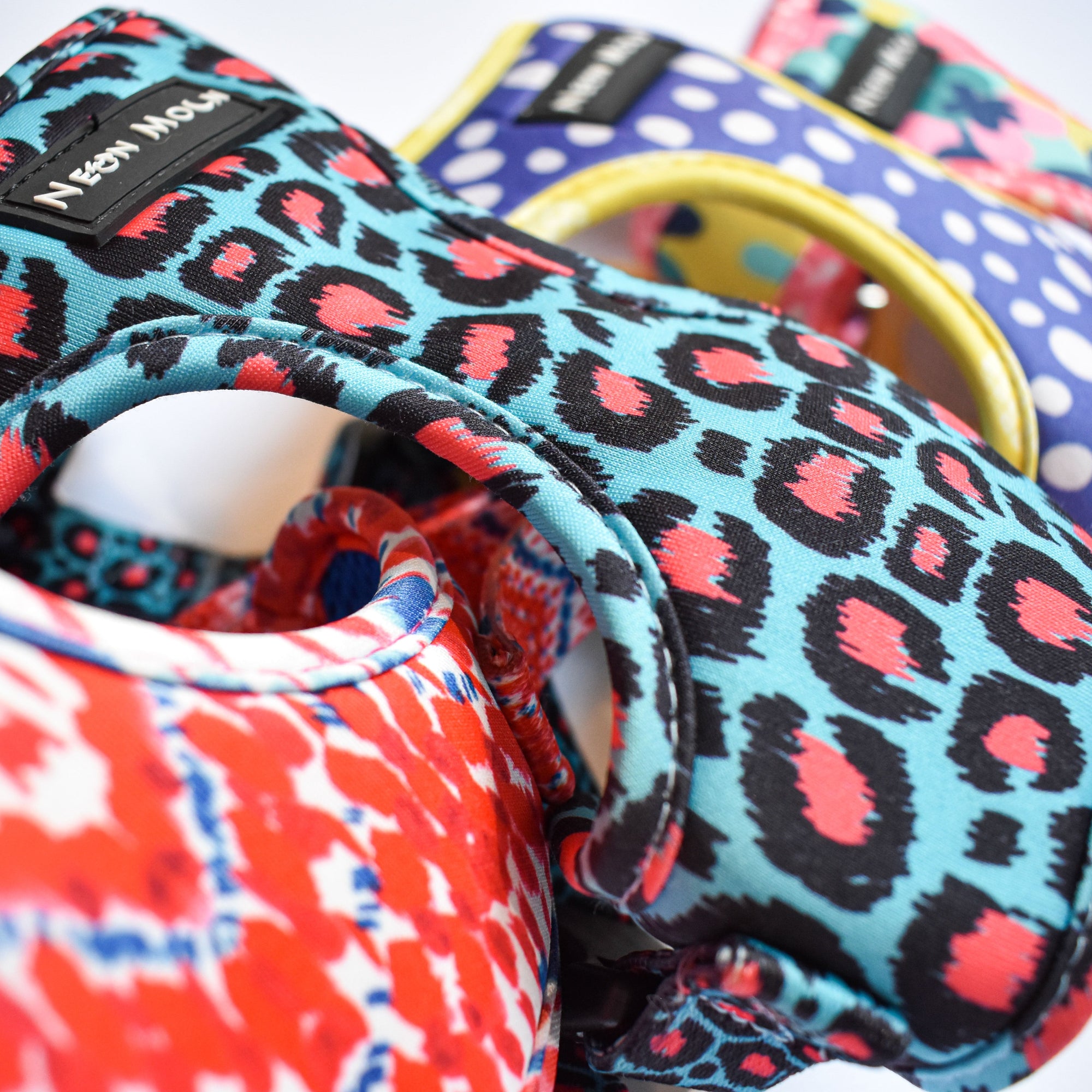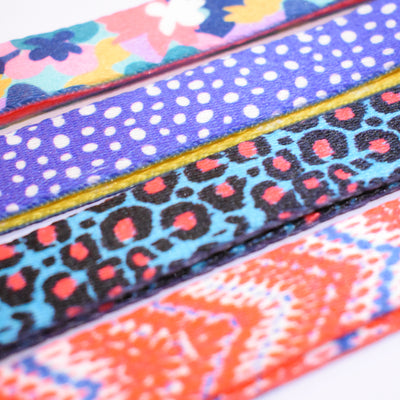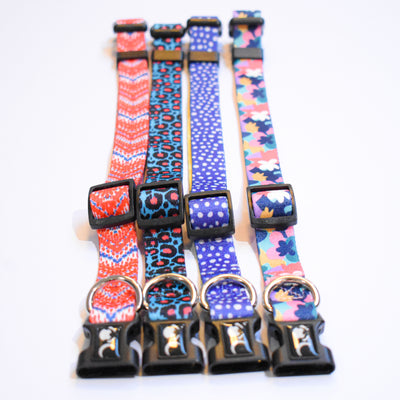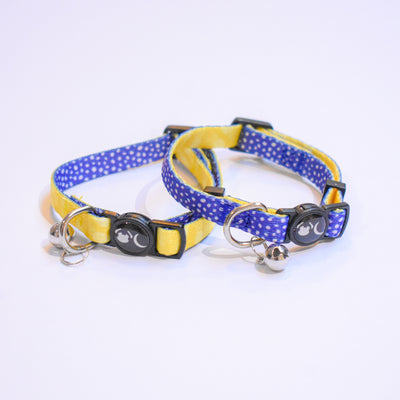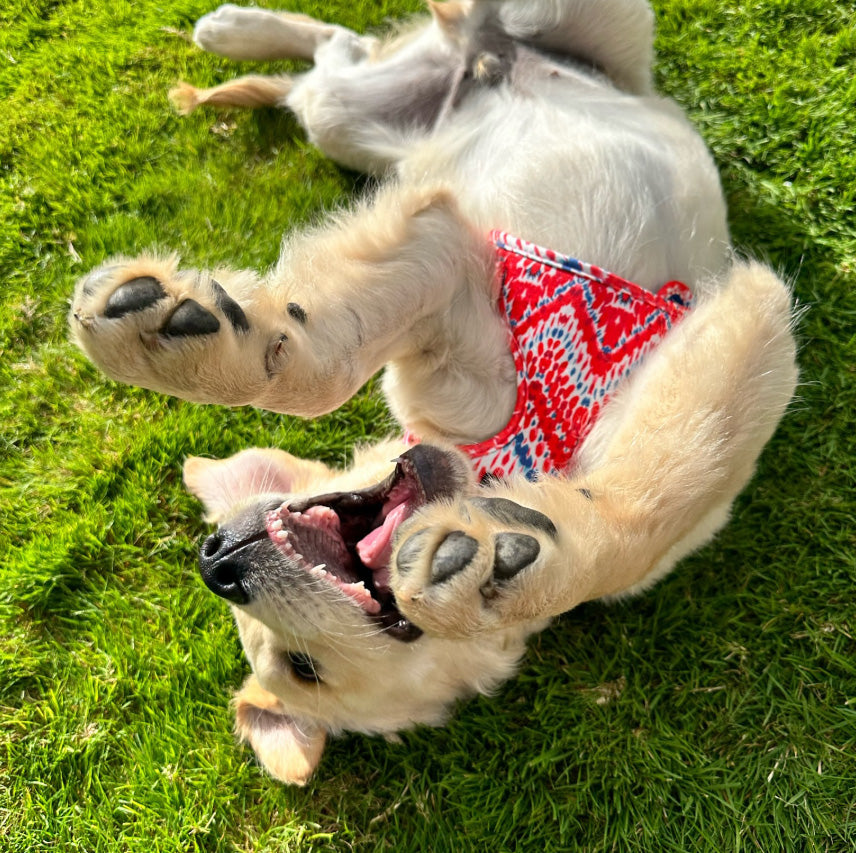Your dog panics at harness time? You're not alone.
Nervous dogs hate harness equipment. This creates stress for everyone involved. Experts warn against forcing the use of dog harnesses. A gentle approach works better. Patient training saves stress later.
Dogs that hate harnesses need patience and training. This article shows you practical solutions. Early introduction matters. Create positive associations. Watch for warning signs - pawing, scratching, moving away. Don't ignore these signals. We'll show you better methods.
Your nervous dog can learn to love their harness. These simple techniques make it happen.
Start with Trust and Handling Comfort
Trust comes first. Your nervous dog needs to feel comfortable with your touch before any harness appears.
Check if your dog is okay being touched
Watch your dog's body language. Relaxed dogs stay close when you touch them. Their face stays soft, posture loose.
Warning signs mean stop immediately:
· Weight shifts away from your hand
· Eyes tracking your hand
· Stiff, frozen posture
· Moving away from you
· Pawing, scratching, mouthing
Stop handling when you see these signals. Step back. A willing dog makes harness training much easier.
Use calm environments to begin training
Location matters. Pick a quiet spot where your dog feels safe. Fewer distractions mean better focus.
Set up your space:
· Treats or favourite toy ready
· Dog already calm
· No interruptions from other pets or people
Trainer Paige Gordon says, "Predictability can make a significant difference in how your dog reacts" to handling and touch.
Avoid sudden movements or pressure
Quick movements scare nervous dogs. Don't lean over them - this feels threatening. Approach from the side. Move slowly. Get down to their level.
Let your dog sniff your hand first. Move gradually. Never force contact. Respect their signals - this builds trust.
Keep sessions short and positive. End before stress appears. Use a soft voice throughout. Stay calm yourself.
Desensitise Your Dog to the Harness
Your dog now accepts being touched. Time for the harness itself.
The harness needs to mean good things, not scary things. This takes patience.
Place the harness on the floor with treats
Put the harness on the ground. Scatter treats around it. Your dog should see the harness and think "treats!"
Start simple. Place the harness where your dog feels relaxed. If your dog looks worried, move the harness further away. Build confidence slowly.
"Start with the harness on the ground near your dog and feed your dog treats off of the harness," training experts suggest. Distance matters more than speed.
Reward any interaction with the harness
Your dog looks at the harness? Treat. Sniffs it? Treat. Touches it? Big treat.
Every positive interaction counts. Watch your dog's body language:
· Weight shifting away from the harness
· Stretching to reach treats without moving closer
· Backing away
These signs mean slow down. Take a step back.
Let your dog approach the harness on their own
Never force interactions. Dogs learn faster when they choose.
Some dogs put their nose through the head opening naturally. Brilliant! Reward this heavily.
This phase takes time. Days, sometimes weeks. The investment pays off. Rush now, struggle later.
Train in Small Steps with Positive Reinforcement
Your dog accepts the harness nearby? Time for the real thing. Break this into tiny steps. Reward constantly.
Guide your dog's head through using treats
Hold the harness in one hand. Treats in the other. Dangle the harness and place treats through the head opening. Your dog pokes their head through to eat. This guides their head into position naturally.
Your dog gets confident? Move your treat hand further through the opening. They need to put more head inside the harness for their reward. Praise every attempt.
Clip the harness while rewarding calmly
Your dog puts their head through easily? Time to fasten it. Drop treats on the floor. This distracts them while you fasten the clips. Reward them again for staying calm.
Don't rush this step. Your dog's comfort matters most. Never lean over your dog while fastening - this feels threatening. Kneel beside them. Position yourself on the same side you're clipping.
Increase duration of wear slowly
Start with seconds. Build up wearing time gradually. Remove the harness while your dog still feels comfortable. Don't wait for resistance. This teaches them harness wearing ends.
Use the harness during play or meals
Put the harness on before mealtimes or play. Toss treats for your dog to chase while wearing it. This creates movement and builds positive associations through fun.
Let your dog wander your home or garden with the harness on. They get used to the feeling in familiar places. This prepares them for outside walks.
Avoid Common Mistakes That Set Back Progress
Mistakes happen. Some can undo weeks of progress. Here's what not to do.
Don't force the harness on
Never force the harness. This makes anxiety worse. Dogs remember bad experiences. Your dog will fight harder next time. Step back when your dog shows reluctance. Pressure creates stronger fear.
Don't remove it when your dog resists
Taking off the harness when your dog paws teaches the wrong lesson. Your dog learns that fussing works. Remove the harness during calm moments only. Don't reward resistance. Know the difference between fear and mild discomfort.
Watch for subtle signs of fear
Most owners miss early warning signs. Look for:
· Cowering, retreating, or freezing
· Tucked tail or back ears
· Excessive licking, yawning, or panting
· Wide eyes showing the whites
· Refusal to take treats during training
Your dog isn't being stubborn. These signs mean genuine stress. Change your approach.
Avoid leaning over your dog
Body position matters. Leaning over your dog feels threatening. Kneel beside them instead. Stay on the same side where you're clipping. Your dog will feel safer at your level.
Conclusion
Nervous dogs need patience. Read their body language. Rushing ruins weeks of work.
Positive training beats everything. Treats, praise, play - these change how dogs see harnesses. Scary equipment becomes reward time. Small steps build confidence.
Watch your dog's feelings during training. Trust grows both ways. Walks become easier for everyone.
Patient owners win. Days or weeks of training prevent years of problems. Your dog will love walks, adventures, and you. Fear into joy - that's what good training does.



